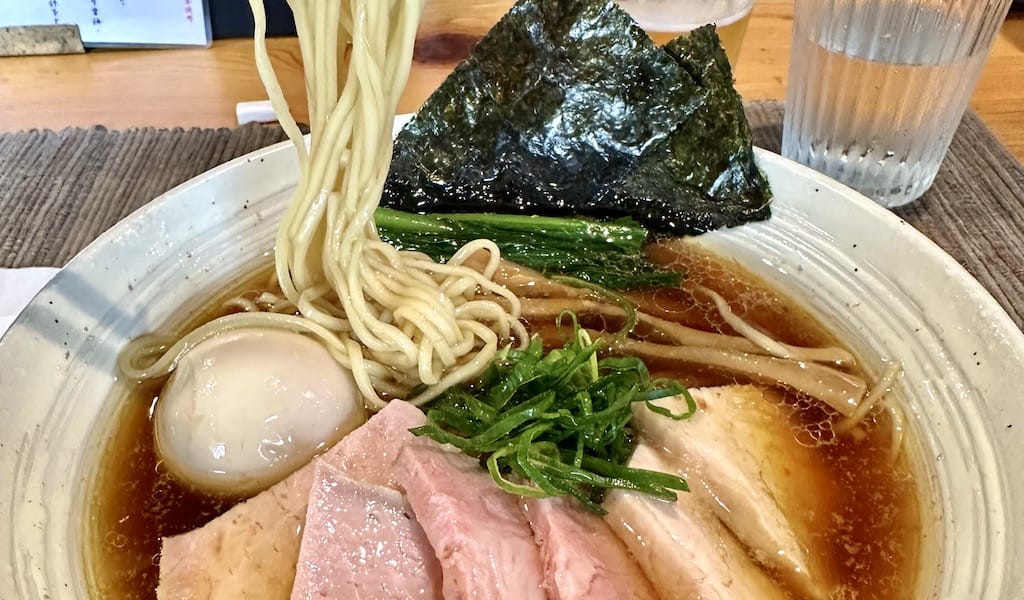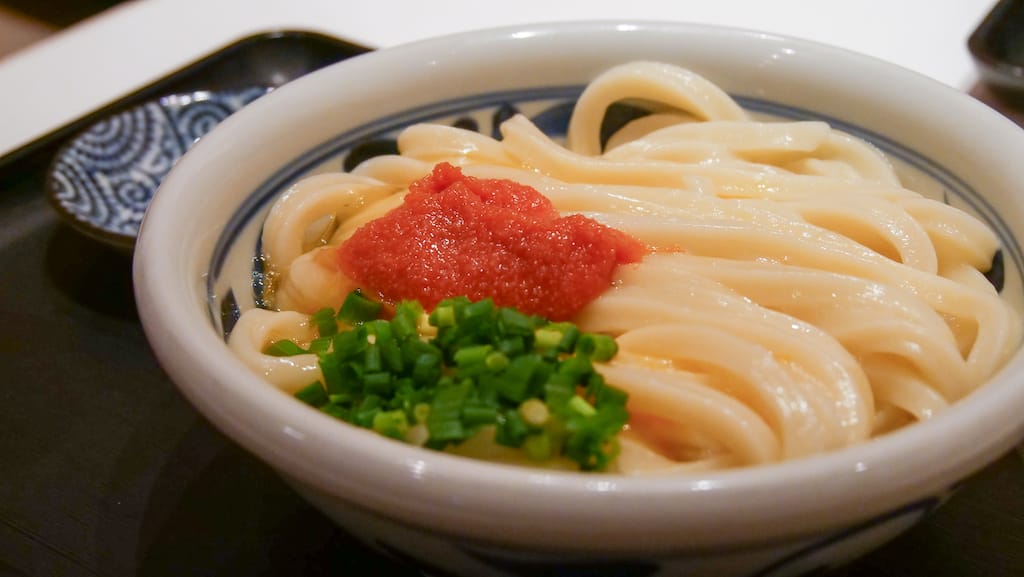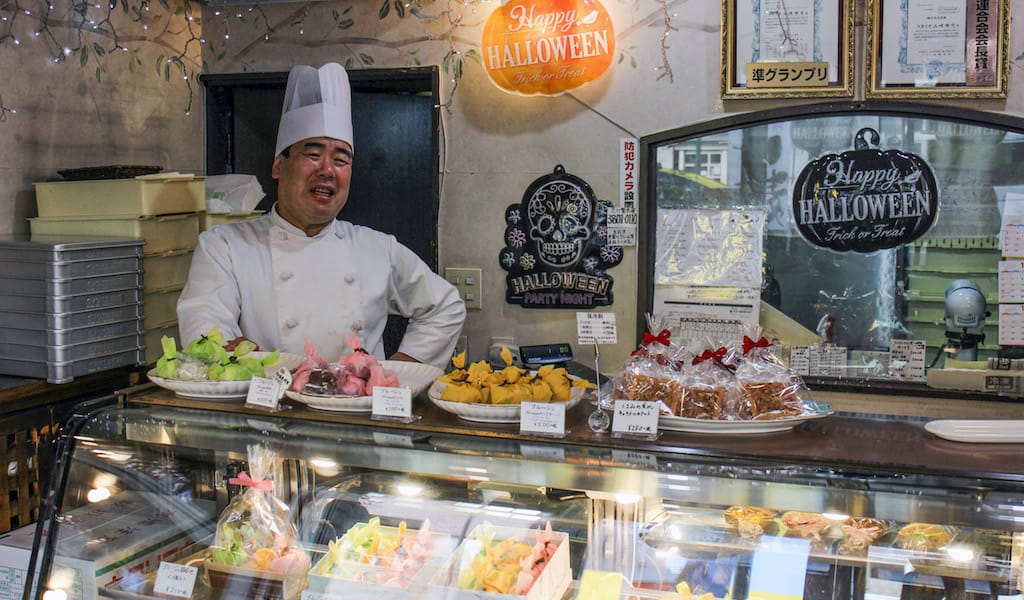Editor’s note: In the latest installment of our recurring First Stop feature, we asked chef and ramen expert Ivan Orkin about the first dishes he craves when he returns to Tokyo. Ivan is originally from the U.S. but has spent much of his life in the Japanese capital. He is the author of The Gaijin Cookbook and has opened and operated ramen shops in both Tokyo and the U.S., including Ivan Ramen on New York’s Lower East Side. You can follow Ivan on Instagram @ramenjunkie.
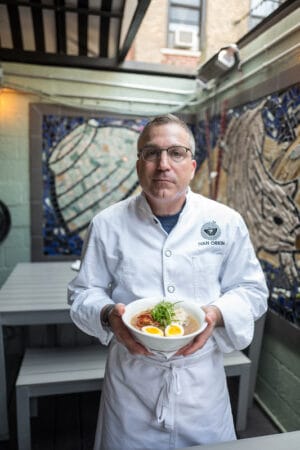
Whenever I come back to Japan, I crave eggs. We go straight to our buddy’s house and his wife almost always makes us a bowl of rice with a raw egg on top of it. And that’s often my kick-off to being back. There are definitely restaurants where you can get that, but the eggs here are so incredibly delicious that I just crave them [by themselves], with some seaweed sprinkled on top and a little good soy sauce. It is, for me, one of my all-time comfort dishes.
We almost always start our days at the FamilyMart, which is one of the convenience store chains near where I stay when I’m visiting. My wife and I have an egg salad sandwich about every other day for the whole trip. For $1.75, they are shockingly delicious.
Then, I look for ramen. I have a ramen place that I go to pretty regularly, and it’s pretty famous, but I really like it. It’s called Ramen Nagi Golden-gai. Ramen Nagi is essentially a tonkotsu-style restaurant. They are slowly expanding and probably have 10 or 12 locations in Japan, but I remember when Satoshi Ikuta opened it, and now he’s a big businessman.
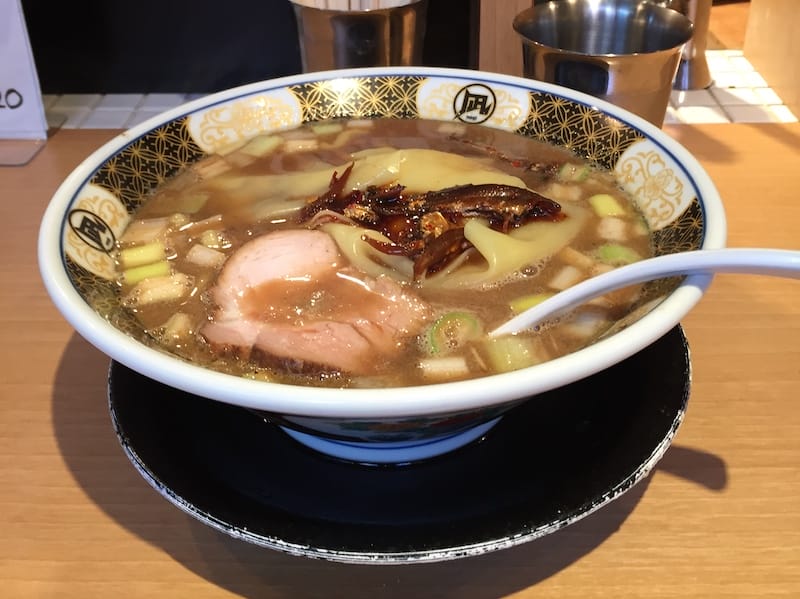
Back in the day, he would find tiny, rickety spaces, and he would build them out all by himself. And this spot, Ramen Nagi Golden-gai, is basically in the heart of the down-and-dirty drinking quarter in Shinjuku, five minutes from the Shinjuku Station. You walk down an alley to get there and then up a very, very narrow set of steps. [Inside] there are seven seats. They have a truck mirror out the window so they can look down and see who’s lined up, and a hose that you can talk into. It’s super fun. They serve a bowl of tonkotsu niboshi ramen which has pork bone broth with kind of a funky fish taste blended in. Their signature thing is to lay one or two pappardelle noodles on top of the whole bowl. I always love it. I’ve been there many, many, many, many times and it just reminds me of funky, good Tokyo ramen.
I also always look for a new place, and my latest is a place called Menya Sakurai. It’s in Mitaka, which is near where I always stay in western Tokyo at my best friend’s house. Apparently this place has been really famous for like five or six years but I just didn’t know about it. [They] make a pristine bowl of chicken broth shoyu ramen that is just sublime.
Every trip, I go to at least one, if not three or four new Ramen shops. I always look at Ramen Adventures and Ramen Beast, the two guys who basically eat ramen and write about ramen for a living.
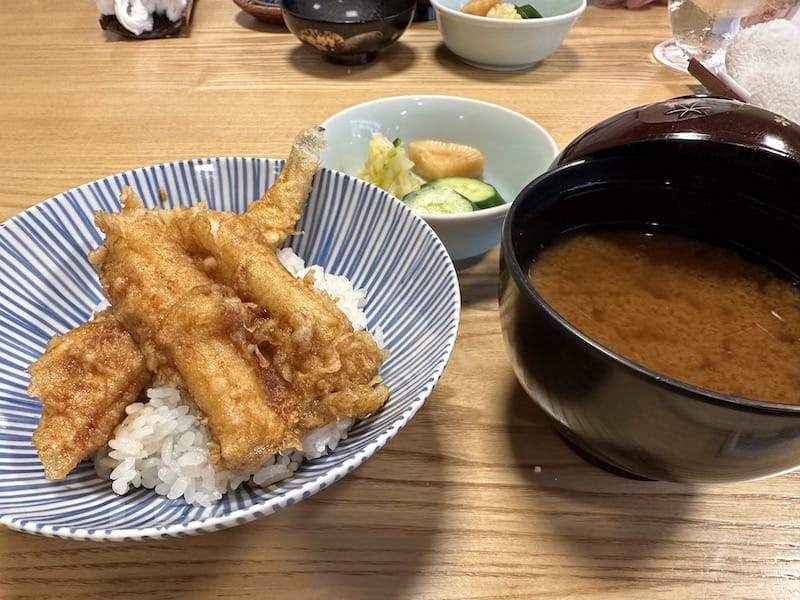
I’m always on the lookout for a good tempura. Tempura is something that I don’t think you can eat in America. It’s very Japanese because there’s very little to hide behind. It’s really just fresh vegetables. I mean, they do shrimp, they do a few kinds of fish, they’ll do scallop, but generally speaking, tempura is really made to make vegetables shine, [especially] a lot of mountain vegetables. [In tempura], vegetables are kind of preserved in their perfect peak moment. It’s so feathery light; it’s not dripping with grease (at least if you go to a good place). Maybe there’s a little bit of salt added, maybe it has some matcha mixed into it. And they’ll have their special soy sauce with grated daikon that you can mix in as well.
The tempura place that I’ve been going to for about 20 years is the Yamanoue Hotel. In English they call it the Hilltop Hotel. It’s a famous hotel that all the famous writers would go to in the thirties and forties. In the old days, your publisher would lock you in your room and say, “You can’t leave until you’re done what you have to write.”
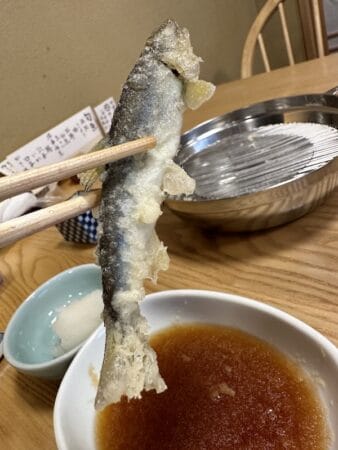
If you’re lucky enough, you get a seat at their old wood counter. With tempura, it’s the same thing as with sushi… I hate eating sushi when I get a whole plate of it at once. I love getting one piece at a time. At really good tempura places, it’s the same idea. You sit there, they grill or fry something, put it in front of you and you eat it. And when it’s gone, they fry you the next thing. So you’re eating these things at their absolute freshest, not getting them cold on a big platter. You’re eating them as they’re cooked.
Finally, I never go back to Japan without going to Isetan department store. I go once every time, and sometimes more than once. As most Japan nerds know by now you’re always supposed to go to the depachika in the department store, the basement food court. And I think the one in at Isetan might be the best – it’s pristine and beautiful, and I always walk around just eating stuff. I think the last time we went had mochi stuffed with really fresh strawberries, and cream puffs. They also do an omelette that’s stuffed with seasoned rice…all kinds of delicious things.
Finally, often, even at the end of a fancy meal, we’ll go to 7-Eleven, where [in Japan] they curate wagashi-inspired traditional desserts. They have a whole line of wagashi desserts like warabi mochi with some kind of cream sauce, and it’s always quite tasty. We’ll often need to end our night with a dessert there.
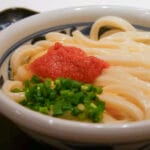 February 8, 2024 Taniya
February 8, 2024 Taniya
There’s a pocket of Tokyo, strolling distance from the stock exchange and the former […] Posted in Tokyo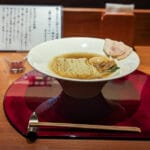 November 28, 2023 CB On the Road: Secret Ramen in Kyoto’s Gion District
November 28, 2023 CB On the Road: Secret Ramen in Kyoto’s Gion District
The Gion district of Kyoto embodies the romanticism that surrounds Japan’s ancient […] Posted in Tokyo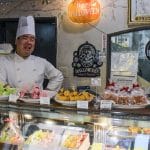 May 22, 2023 Ura Sablon
May 22, 2023 Ura Sablon
Ramen joints are often easily recognizable, either by large windows illuminating […] Posted in Tokyo
Published on September 07, 2023
Related stories
February 8, 2024
TokyoThere’s a pocket of Tokyo, strolling distance from the stock exchange and the former commercial center, which feels like a step back in time. Ningyocho is filled with stores specializing in traditional crafts, some more than 100 years old. Here you can buy rice crackers or traditional Japanese sweets or head for a kimono, before…
November 28, 2023
TokyoThe Gion district of Kyoto embodies the romanticism that surrounds Japan’s ancient capital. Filled with machiya (traditional long wooden houses), it harbors several “teahouses,” where geiko — the Kyoto term for geisha – entertain their high-class guests with quick-witted conversation and skilled musical performances. Yet just north of Shijo Street, the neighborhood evolves into a…
May 22, 2023
TokyoRamen joints are often easily recognizable, either by large windows illuminating slurping customers, a vending machine dispensing meal tickets at the doorway, or the brightly lit signs; usually it’s some combination of the three. When it comes to Ura Sablon, however, one might easily pass it by. The narrow entrance is tucked away between a…







































